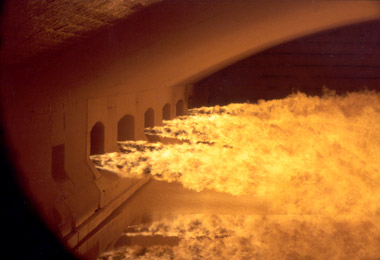Hazards & Risks
Please note that the following is not intended to be an exhaustive guide as each and every circumstance may differ. No liability can be accepted for any injury that may occur as a result of considering the data provided below.
Handling glass can, if not properly planned, lead to serious injuries or even death. Hazards include cuts and punctures (from broken glass or the sharp outer edges of that which is still intact). These may take the form of major lacerations. Glass can also be heavy leading to crush injuries or even death if stacked glass falls on you.
Having ascertained what the hazards are you will need to assess the risk posed by such hazards (by carrying out a risk assessment as required by Health and Safety Legislation). Following this, you should, as far as is reasonably practicable, remove the risk altogether – for instance by using mechanical manipulators instead of people to move / handle the glass.
This of course will not always be possible and you will then find it necessary to provide your employees with safety clothing and PPE.
Training must play a vital role both in how to handle glass correctly and how to select, use and look after your PPE / Clothing correctly.
What type of clothing and equipment should you provide? In nearly all cases the products required will fall into the ‘intermediate’ category for PPE and European Norms (standards) will apply – for instance EN 388 for the mechanical protection provided by gloves and clothing, EN 345 for safety footwear and EN397 for safety helmets.
Your risk assessment will tell you what parts of the body require protection and how much. In some cases this will be simple (e.g footwear to EN 345 – 200 joule toe cap with steel midsole and possibly metatarsal protection). In other cases such as clothing and gloves there are a number of different levels of protection against cuts / punctures etc. In such cases we would suggest you consider providing the maximum protection available without hindering the ability of the employee to carry out the job safely (for instance the glove with the highest cut level index may make it difficult to grip the glass thereby increasing the chance of it being dropped).
Contact 01925 645645 to discuss which products will work and which wont. Our experience in the industry will help you narrow down the list of potentially suitable and safe products. Please also note that certain products may damage the glass or it’s coating (for instance latex will mark soft coats).
In terms of clothing you can now buy the chieftain range of garments which offer cut level 5 and puncture level 2 whilst being extremely lightweight and wearable.
Make sure you protect all parts of your body from all risks, you will need to protect your eyes from flying particles of glass and glass dust, your head from falling objects and bumps, your ears if you are working in a noisy environment, your hands from cuts and other injuries, the at risk parts of your body (this may be your whole body). Ensure your risk assessment covers all the potential hazards and the risks they may pose.
You may belong to one or other of the trade associations, for instance the Glass and Glazing Federation (GGF) http://classic-web.archive.org/web/20060502002528/http://www.ggf.org.uk/, The British Glass Manufacturers Confederation http://classic-web.archive.org/web/20060502002528/http://www.britglass.co.uk/ or the Fenestration Self-Assessment Scheme (FENSA) http://classic-web.archive.org/web/20060502002528/http://www.fensa.co.uk/ All of these organisations will be able to offer help and advice with to handling glass safely. You may also get help and guidance from The Health and Safety Executive (HSE) http://classic-web.archive.org/web/20060502002528/http://www.hse.gov.uk/
